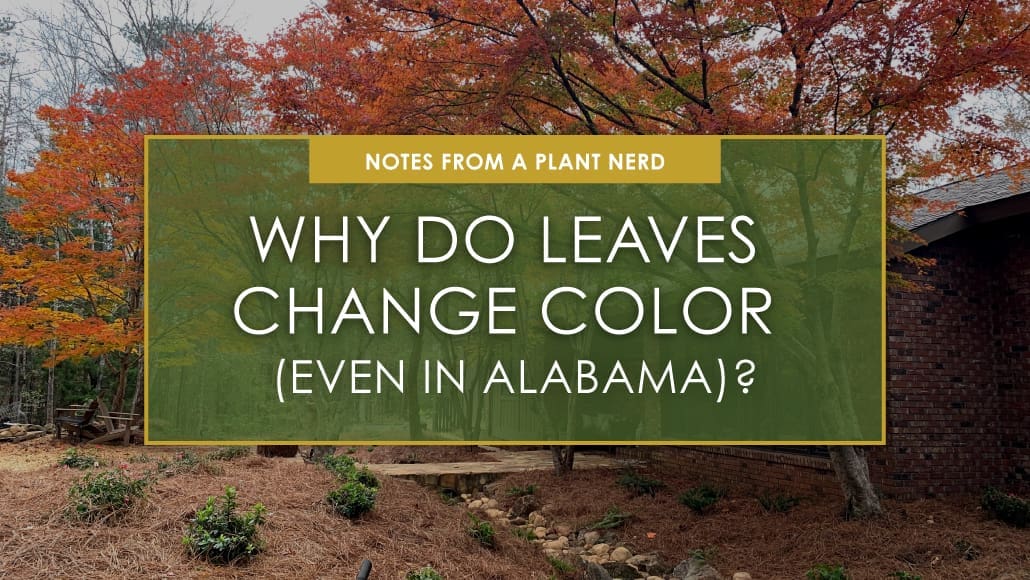We may not get the blazing red hillsides of Vermont, but make no mistake – autumn still shows up in East Alabama. You just have to know where (and how) to look.
Here in USDA Zone 8A, trees like red maples, black gums, and dogwoods know how to make an entrance. And behind every flash of gold or crimson leaf? There’s a whole lot of plant chemistry at work – the kind we secretly love geeking out on.
Chlorophyll: The Green Workhorse of Your Alabama
Most of the year, leaves are green thanks to chlorophyll — the pigment that powers photosynthesis and keeps plants fueled. It’s the ultimate multitasker: sunlight in, energy out.
But when days get shorter and nights cool off (even just a bit here in Auburn and Opelika), plants get the memo that the growing season’s winding down. So they start pulling that chlorophyll back into storage like it’s their 401(k).
Carotenoids & Anthocyanins: Fall’s Secret Artists
Once chlorophyll fades, the pigments underneath get their moment.
- Carotenoids bring the yellows and oranges — your hickories, sweetgums, and golden sugar maples showing off around Lake Martin.
- Anthocyanins create the reds and purples, especially in dogwoods and red maples.
Fun fact: those reds aren’t always hiding there. Plants actually make anthocyanins in response to stress — cool nights, dry soil, or too much sun. Basically, your tree’s saying, “Welp, I’m stressed… but make it fashion.”
Our local twist:
Here in East Alabama, the intensity of fall color depends a lot on what happens leading up to the season. Warm, wet springs and mild, dry autumns bring the best show – leaves stay healthy all summer, then shift gradually as nights cool. But extreme late-summer drought can cut the performance short. When trees get too stressed, they drop leaves early to conserve water, skipping that dramatic color phase altogether.
It’s one more reason why thoughtful landscaping in Alabama matters – especially when you’re designing for resilience.
Trees Know When to Let Go
That color shift is more than a costume change – it’s also a signal. As chlorophyll breaks down, a layer of cells at the base of each leaf stem starts to separate in a process called abscission. It’s the plant’s graceful way of letting go – conserving energy and protecting itself for winter.
Why It Matters in Landscape Design in Auburn, AL
This is where the science meets design. When we plan your landscape, we think beyond what looks good in June.
- Want a little drama each fall? We’ll layer in trees that bring reliable color even in a mild southern season.
- Want low-maintenance near the pool or patio? We’ll balance deciduous trees with evergreens so you get rhythm without the raking marathon.
Seasonal change isn’t just decoration — it’s choreography. The way color moves through your landscape tells a story about time, resilience, and connection.
Even Here, Fall Has Its Flair – and It Belongs in Your Backyard
So, the next time you catch a flash of red dogwood leaves or gold sweetgum out your window in Auburn, Opelika or Lake Martin, pause for a second. You’re witnessing a chemical conversation between light, temperature, and life itself – a reminder that even here in Alabama, nature knows how to make an entrance.
And if that isn’t worth designing for, we don’t know what is.




